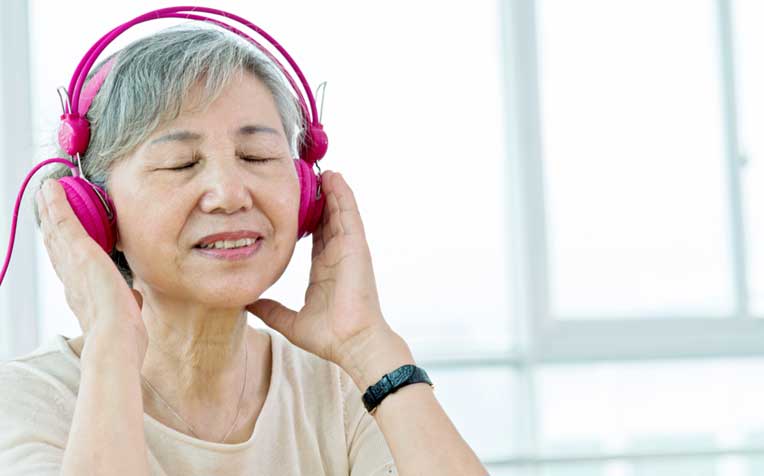
Music therapy can help improve mood, reduce stress and boredom.
Just as marching soldiers call out a cadence to help keep them in step and boost team morale, patients with Parkinson's disease who have movement problems can use the rhythms in songs to help them walk. The beat in the music is a cue to prompt them to perform movements which they no longer do automatically.
Patients with Parkinson's disease, especially those in its more advanced stages, suffer from forms of motor or movement dysfunction like tremors of the hand, speech and swallowing difficulties, muscle rigidity, poor posture and balance. Parkinson disease is a neurological disorder with no known cure, and the symptoms worsen progressively.
"Music therapists use timing cues in music rhythm to re-train Parkinson's disease patients in movements like walking, gross (involving movements of the legs, arms or entire body) or fine motor skills (involving movements of the hands, wrists, fingers, feet, toes, lips and tongue), and initiation of speech," said Ms Christal Chiang, Music Therapist at the Music and Creative Therapy Unit at Singapore General Hospital (SGH), a member of the SingHealth group.
"When they hear the tick-tock of a metronome or musical beat, it is a cue for them to start walking. And the regular beat (of the music) trains them to move more smoothly."
Losing one's ability to walk is distressing, and patients may be anxious before walking or performing other movements. Music can help calm a patient before he starts to do seemingly simple tasks like walking, said Ms Chiang. She uses the keyboard, guitar, drums or autoharp during therapy, depending on a patient's needs.
Parkinson's disease can impact mental health
Patients often become depressed and withdrawn because of the disabling effects of the disease. Again, music can play a role in providing social and emotional support. When a patient finds it difficult to confide in his family or friends about the problems he is facing, Ms Chiang uses music to initiate conversation with him. She might give him an exercise in writing the lyrics to well-known tunes as a way of expressing himself.
Doctors recommend music therapy if they think a patient may benefit from it. Studies elsewhere have testified to the benefits of music therapy in treating various diseases, including Parkinson's, although this type of therapy is not considered standard hospital care.
Still, since SGH began offering music therapy in August 2011, it has received some 280 referrals, Ms Chiang said.
Each session lasts for 30 minutes and the costs are not claimable from Medisave as it does not fall under any welfare scheme. The number of sessions required depends on the patient's condition and the short- and long-term goals set by his doctor. The music therapist structures the course of therapy to facilitate these objectives.
When a patient is referred for gait training, he will first walk 10 metres for a physiotherapist to assess his walking speed in paces per minute. The music therapist then translates this into beats per minute to determine the required musical rhythm. When the patient becomes more adept at movement, this rhythm is used to train him to walk: the patient takes left-right steps according to the beat of the music.
Ms Chiang usually works with a physical or occupational therapist, especially in gait training where there is a risk of the patient falling.
Fast facts about Parkinson's disease
- Parkinson's is the second most common neurodegenerative disorder after Alzheimer's disease. It affects three out of every thousand individuals in Singapore aged 50 years and above. The disorder is more likely to affect older people.
- Parkinson's disease occurs when the nerve cells in the brain that produce the chemical called dopamine die. Dopamine allows messages to be sent to the parts of the brain that coordinate movement. It is not known why these nerve cells die.
- In the early stages of Parkinson's disease, symptoms may be so mild that they go undetected. As the disease progresses, symptoms become more obvious and worsen till they become disabling in the late stages. Among the more common symptoms are the shaking of the arms or legs when at rest, stiffness of the arms, legs or body, and slow movement.
- People with Parkinson's disease are often prone to falling because their balance becomes impaired. They also have swallowing, speech and communication difficulties.
- Medication can help improve symptoms of Parkinson's disease, but currently, there is no cure for the disease.
Ref: R14
Check out other articles on Parkinson's disease:
Parkinson's: Early Signs and Symptoms
Contributed by


















 Get it on Google Play
Get it on Google Play